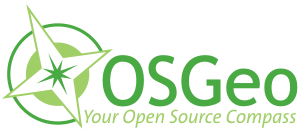Selected Presentations
Home > Presentations > Abstract details
Title
INTRODUCING POSTGIS WKT RASTER: SEAMLESS RASTER/VECTOR OPERATIONS IN A SPATIAL DATABASE
Abstract
The goal of the PostGIS WKT Raster project is to implement support for raster data in the PostgreSQL/PostGIS spatial database. It will support a complete set of SQL operators for raster manipulation and analysis. WKT Raster raises the abstraction from the data structure level to the operation level. As a result most PostGIS vector data operations (like overlay operators) will work transparently with either raster data or mixes of raster and vector data. WKT Raster also allows registering rasters actually stored in the filesystem, enabling faster JPEG access for web applications. This architecture should 1) help users already familiar with PostGIS to easily master the new raster capabilities; 2) simplify GIS applications and development because they can use a unique SQL interfaces to work with both vector and raster data instead of two as it is generally the case; 3) address concerns about the speed of access to raster data by web applications.
WKT Raster implements a new data model for continuous raster coverages very differently than the ones implemented in existing systems such as Oracle Spatial. WKT Raster stores raster tiles in only one table, not two. This one table structure, better representing geographic coverages, is identical to the way PostGIS stores vector coverages. The consequences are that each raster tile (or each raster) has its own georeference and its own identity (or attribute set, like a PostGIS geometry does) and that rasters can overlap.
WKT Raster also introduces a new kind of geospatial object, midway between the continuous raster coverage and the more object-oriented polygon coverage. "Raster objects" are autonomous rasters that can be used to better model discrete surface objects like varying depth lakes, varying intensity fires or fuzzy animal territories and continuous and overlapping ones like fuzzy land covers or fuzzy distribution of surficial materials.
Authors
Pierre Racine - University Laval
Steve Cumming - University Laval
Sandro Santilli - Refraction Research
Mateusz Loskot - Cadcorp
Jorge Avalero - DEIMOS Space
David Zwarg - Azavea

